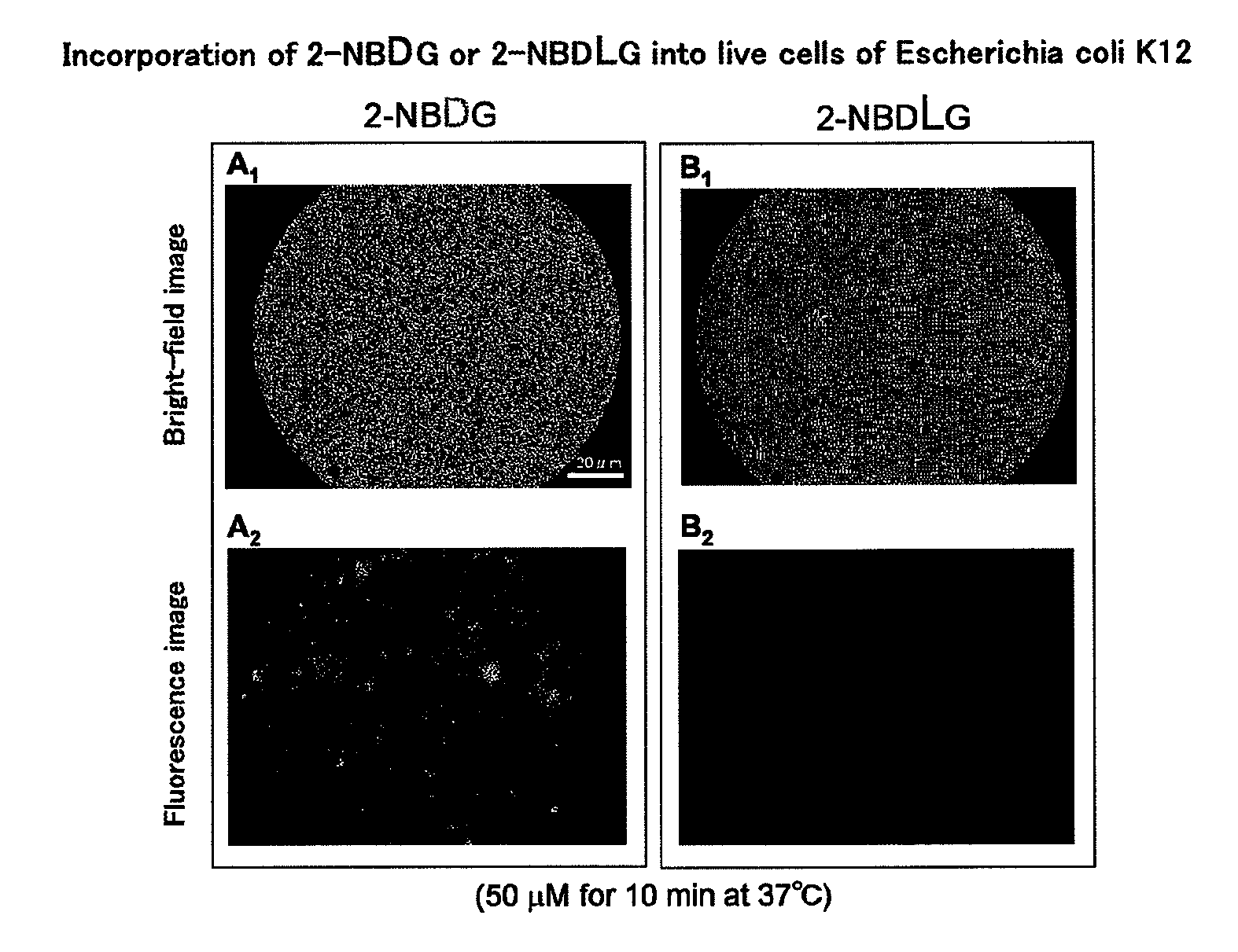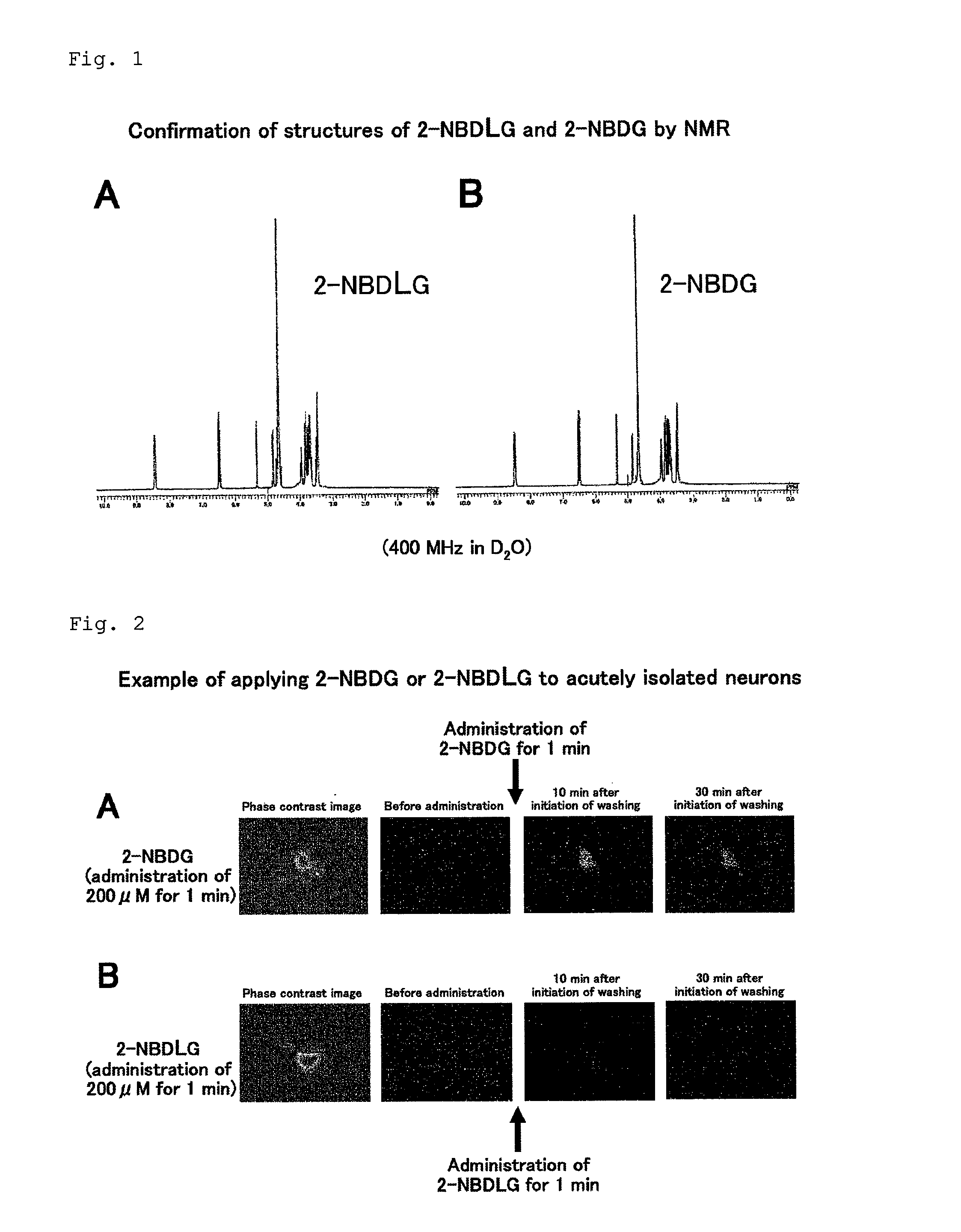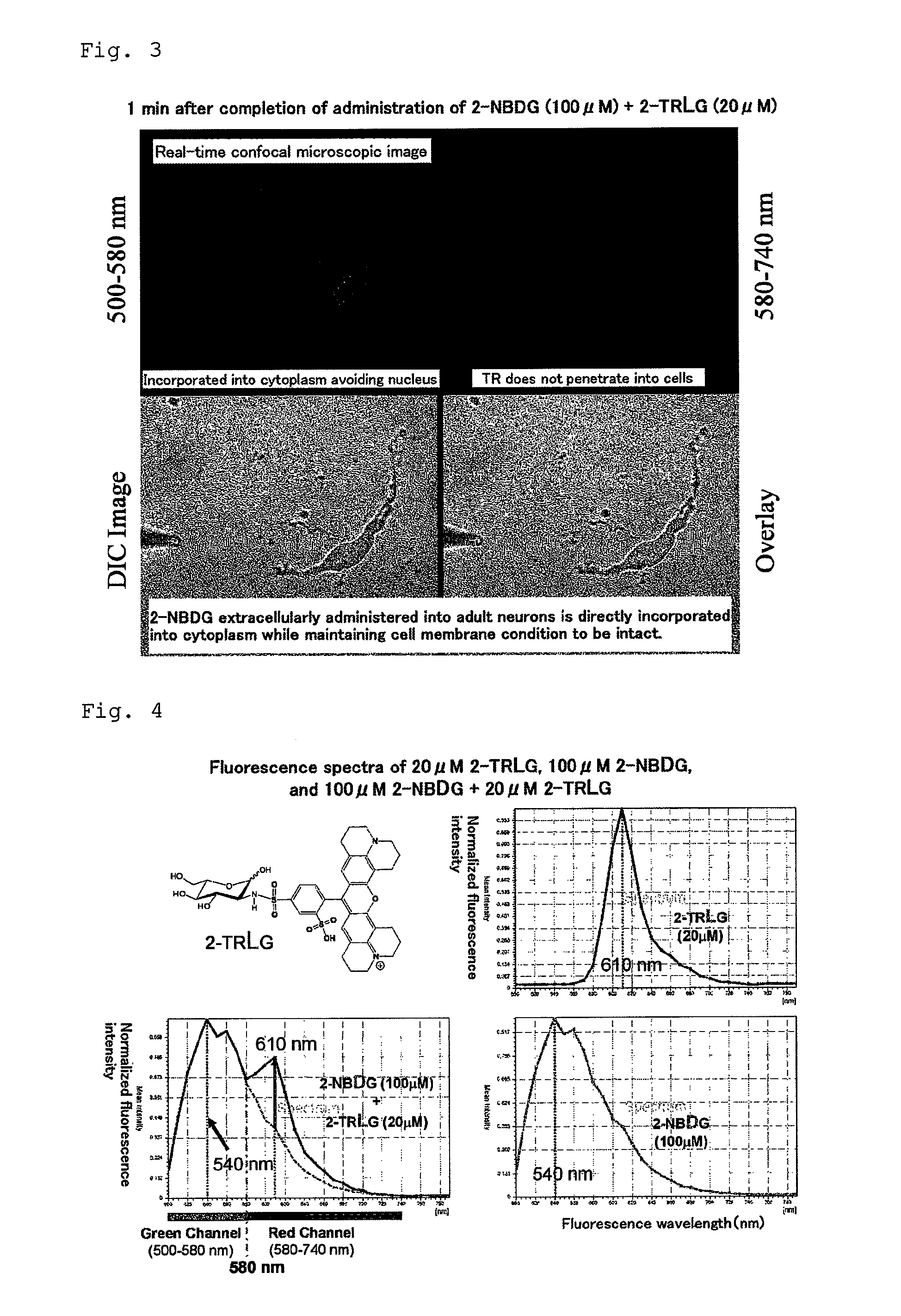Method for evaluating specific incorporation of d-glucose into cells
a specific incorporation and d-glucose technology, applied in the field of accurately evaluating the specific incorporation of d-glucose into cells, can solve the problems of low sensitivity, inability to continuously observe the manner in which living cells incorporate d-glucose in real time, and method cannot be used in a study of the process of dynamic incorporation of d-glucose into living cells, etc., to achieve accurate evaluating the specific incorporation of d-
- Summary
- Abstract
- Description
- Claims
- Application Information
AI Technical Summary
Benefits of technology
Problems solved by technology
Method used
Image
Examples
example 1
Example of Applying 2-NBDG or 2-NBDLG to Neurons
1-1: Synthesis of 2-NBDG
[0064]The synthesis of 2-NBDG was performed according to the method described in Non-patent document 1.
1-2: Synthesis of 2-NBDLG
(A) Synthesis of L-Glucosamine Hydrochloride
[0065]The synthesis of L-glucosamine hydrochloride was performed according to the following pathway.
(1) Synthesis of 1,2,3,4,6-penta-O-acetyl-L-mannopyranose (1)
[0066]L-(−)-mannose (9.0 g, 49.96 mmol) was dissolved in pyridine (120 ml), and the resulting solution was cooled in ice. Acetic anhydride (60 ml) was added dropwise thereto over about 15 minutes. The resulting solution was stirred overnight while gradually returning to room temperature. Thereafter, the reaction mixture was concentrated under reduced pressure. Toluene was added to the resulting residue, and an azeotropic distillation procedure was performed twice. Ethyl acetate was added to the residue to dissolve the residue, and the resulting solution was washed sequentially with sat...
example 2
Example of Applying 2-NBDG and 2-TRLG to Neurons
2-1: Synthesis of 2-NBDG
[0125]The synthesis of 2-NBDG was performed according to the method described in Non-patent document 1.
2-2: Synthesis of 2-TRLG
[0126]
[0127]In a brown flask, L-glucosamine hydrochloride (51.9 mg) was placed and dissolved in water (300 μl), and then, dehydrated DMF (1.70 ml) was added thereto. Under an argon atmosphere, diisopropylethylamine (84.1 μl) was added thereto, and further a solution in which sulforhodamine 101 chloride (30.0 mg) was dissolved in dehydrated DMF (1.50 ml) was added thereto, and the resulting mixture was stirred at room temperature. After 35 minutes, 50% acetic acid (6.00 ml) was added thereto, followed by purification by HPLC. A target fraction was collected and lyophilized. Incidentally, since sulforhodamine 101 chloride which is a fluorescent reagent is a mixture of two isomers (ortho and para isomers), the product was also a mixture of two isomers (ortho and para isomers), and therefore...
example 3
Synthesis of 2-DBDLG
[0149]
[0150]In a brown flask, 4-(N,N-dimethylaminosulfonyl)-7-fluoro-2,1,3-benzoxadiazole (DBD-F) (100 mg) was placed and dissolved in a mixed solvent of methanol (2.00 ml) and THF (2.00 ml). Under an argon atmosphere, a solution in which L-glucosamine hydrochloride (49.8 mg) was dissolved in 0.3 M NaHCO3 solution (1.08 ml) was added thereto, and the resulting mixture was stirred at room temperature. After 48 hours, methanol was removed by concentration under reduced pressure, and the resulting precipitates (unnecessary substances derived from DBD-F) were removed by filtration. The precipitates were washed with water, and the filtrate and the washing solution were combined, followed by purification by HPLC. A target fraction was collected and lyophilized, whereby a target product was obtained (yield: 35.8 mg, yield ratio: 38%).
[0151]1H-NMR spectrum (400 MHz, D2O, δ, ppm): 7.82 and 7.84 (d×2, 0.5H×2, J=8.3 Hz and 8.3 Hz, H-6′), 6.42 and 6.46 (d×2, 0.5H×2, J=8.3 Hz...
PUM
| Property | Measurement | Unit |
|---|---|---|
| fluorescence wavelength | aaaaa | aaaaa |
| fluorescence wavelength | aaaaa | aaaaa |
| fluorescence wavelength | aaaaa | aaaaa |
Abstract
Description
Claims
Application Information
 Login to View More
Login to View More - R&D
- Intellectual Property
- Life Sciences
- Materials
- Tech Scout
- Unparalleled Data Quality
- Higher Quality Content
- 60% Fewer Hallucinations
Browse by: Latest US Patents, China's latest patents, Technical Efficacy Thesaurus, Application Domain, Technology Topic, Popular Technical Reports.
© 2025 PatSnap. All rights reserved.Legal|Privacy policy|Modern Slavery Act Transparency Statement|Sitemap|About US| Contact US: help@patsnap.com



